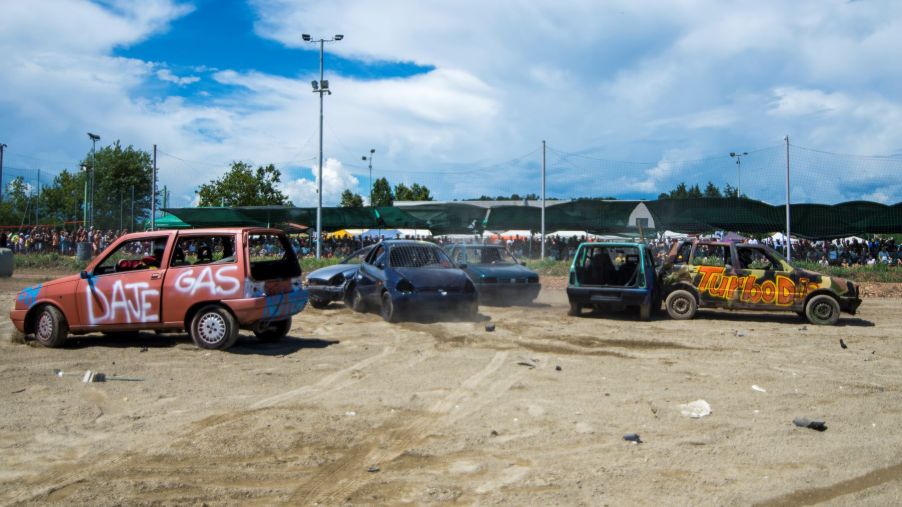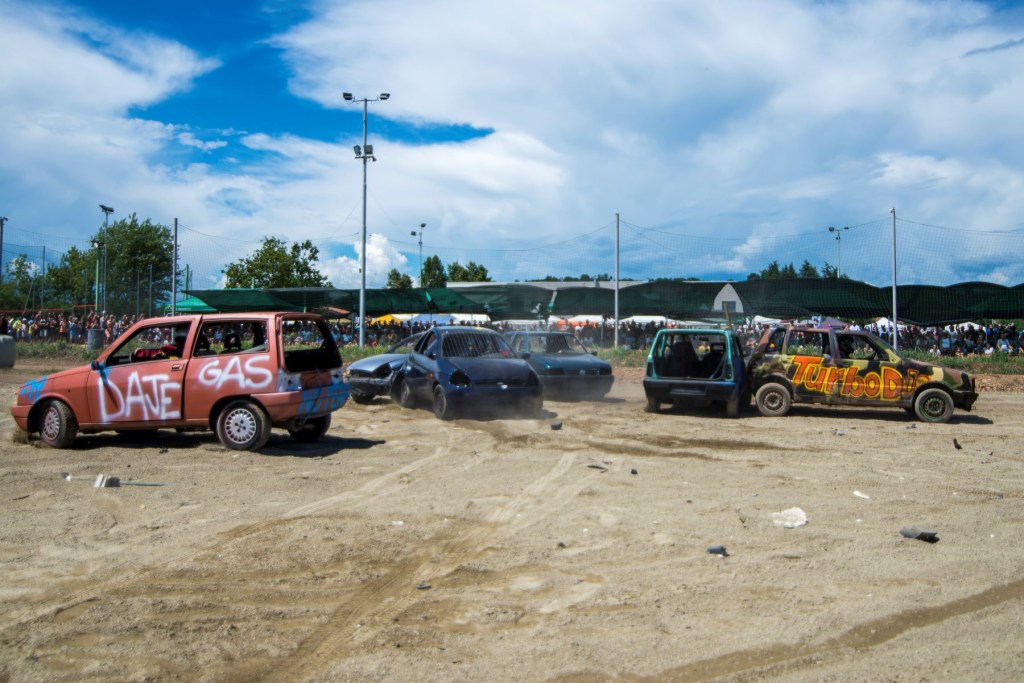
How Did Demolition Derbies Start?
Drivers typically want to avoid crashing their cars and causing accidents, but it’s the name of the game at a demolition derby. They’ve existed for decades and have a storied history as a result. Read on to find out what a demolition derby is, the origins of the competition, and its history up to the present day.
What is a demolition derby and how does it work?

According to Merriam Webster, the definition of a demolition derby is “a contest in which skilled drivers ram old cars into one another until only one car remains running.” Each one is subject to its own rules and winning requirements, but overall, it’s a “last man standing” type competition.
According to Performance Plus Tire, the most common cars used for competitions are rear-wheel drive and front-wheel drive vehicles. One popular rear-wheel-drive vehicle is the Chrysler Imperial from model years 1964-1968. It’s an incredibly durable vehicle, and some demolition derbies even disallow it from their competitions. Another popular choice is the Ford LTD, which is incredibly durable as well. The Ford Escort and GM W-Body vehicles, meanwhile, are both durable and affordable front-wheel drive vehicles.
Rather than specific vehicles for demolition derbies, however, experienced competitors usually keep in mind general guidelines. This is because, for the most part, skill matters far more than the car itself. For one thing, the vehicle must align with the rules. If it doesn’t meet the specifications, it should be modified to make it so.
Going along with this, a vehicle should be easy to modify. Demolition derbies typically have extra requirements designed for driver safety, even if the car would meet the specifications otherwise. Many competitors also choose cheaper vehicles, using most of their money on modifications.
The first event and its founder
The first demolition derby is up for debate and not currently known. According to the Demolition Derby League, the term was used widely by the 1950s, indicating they started sometime before that. So far, the earliest recorded event took place in 1946, which Don Basile started. However, some argue that the rules were too different to be officially recognized, as it was a race with cars modified to be destroyed on impact. Some have suggested that demolition derbies were around as early as the Great Depression, but unfortunately, information is limited.
Other than this, Larry Mendelsohn is generally considered the founder of demolition derbies. In the latter half of the 1950s, he held one in Long Island, New York. According to the National Automotive Parts Association (NAPA) blog, this is when demolition derbies became a trendy “fixture at county fairs and race tracks across the country.”
History of demolition derbies up to the present day
A few decades later, the events continued gaining popularity, meaning that documentation was no longer an issue. ABC’s Wide World of Sports would put demolition derbies on the air in the 70s, and as the decade progressed, they were well-known across the nation. They were at their peak in the 70s and 80s, with many derbies taking place worldwide. Outside of the U.S., Canada, Australia, and other countries began to hold similar events. Some even had up to 100 drivers all competing against each other at the same time. They began to decline in the 90s, however.
While demolition derbies are still around, they’re much less popular than they were in their heyday. According to National Public Radio (NPR), increasing scrap metal prices, more expensive builds, and the time-consuming nature of modifying vehicles are all to blame for the decreased participation. As competitors are less willing to participate, many have had to shut down altogether.


